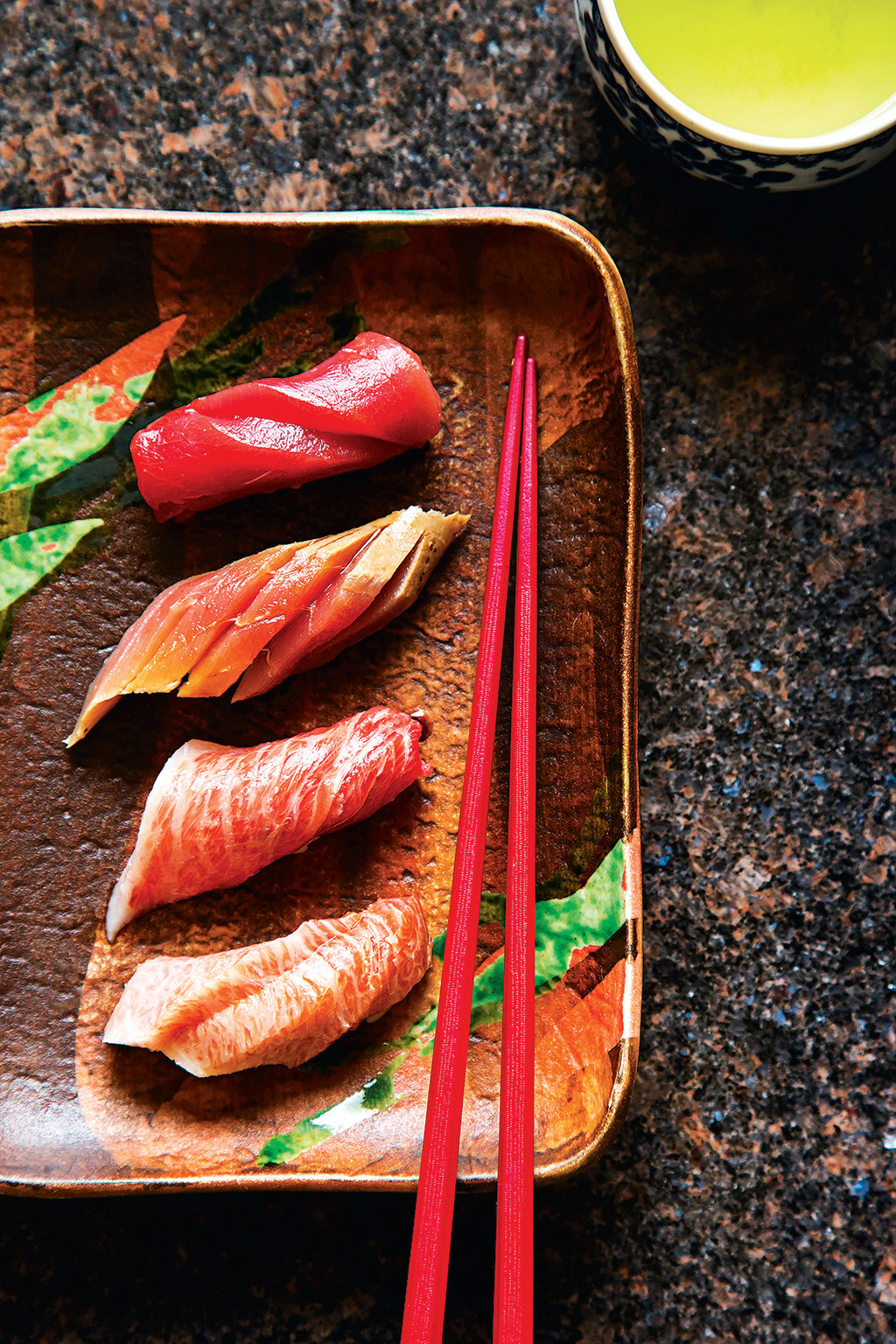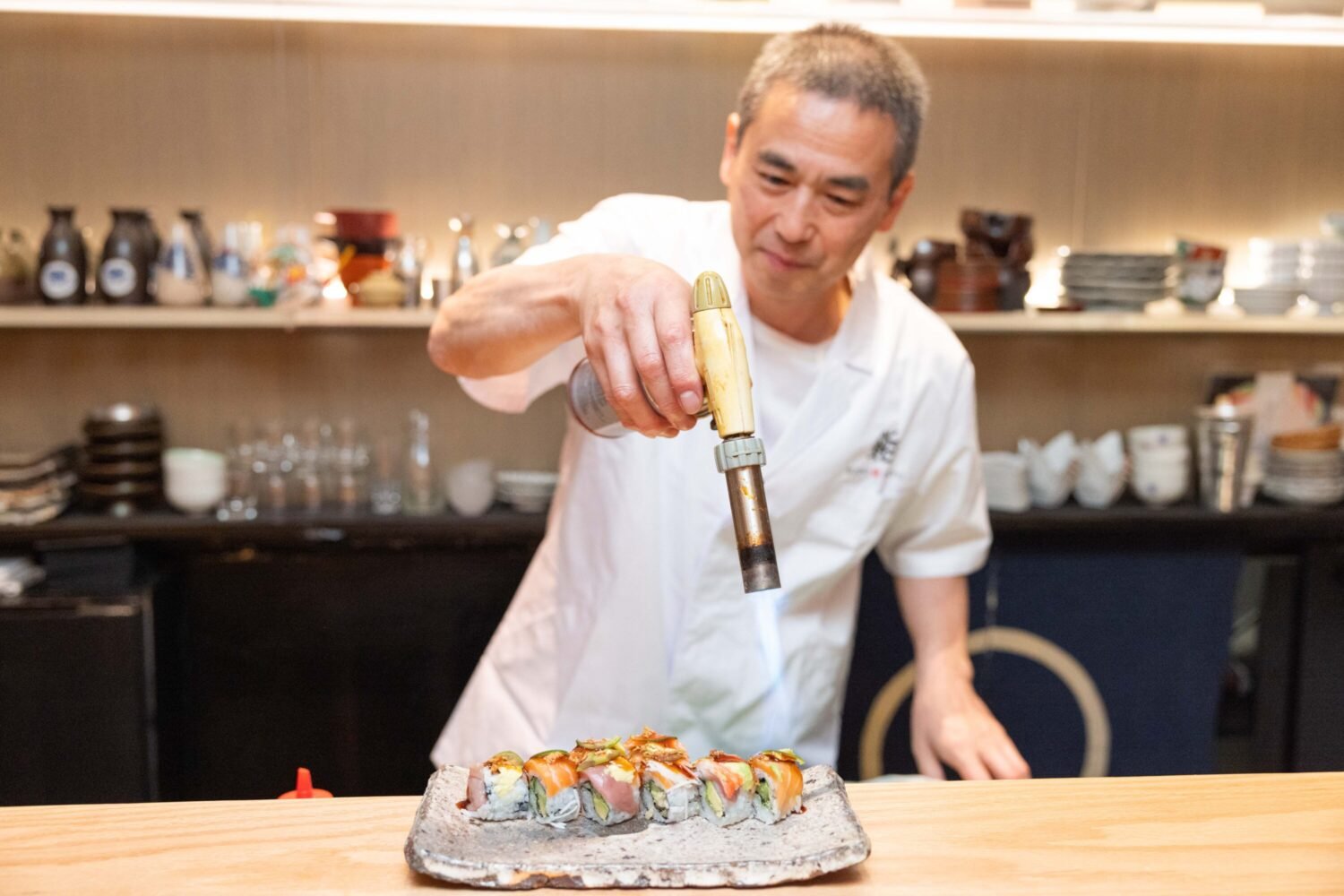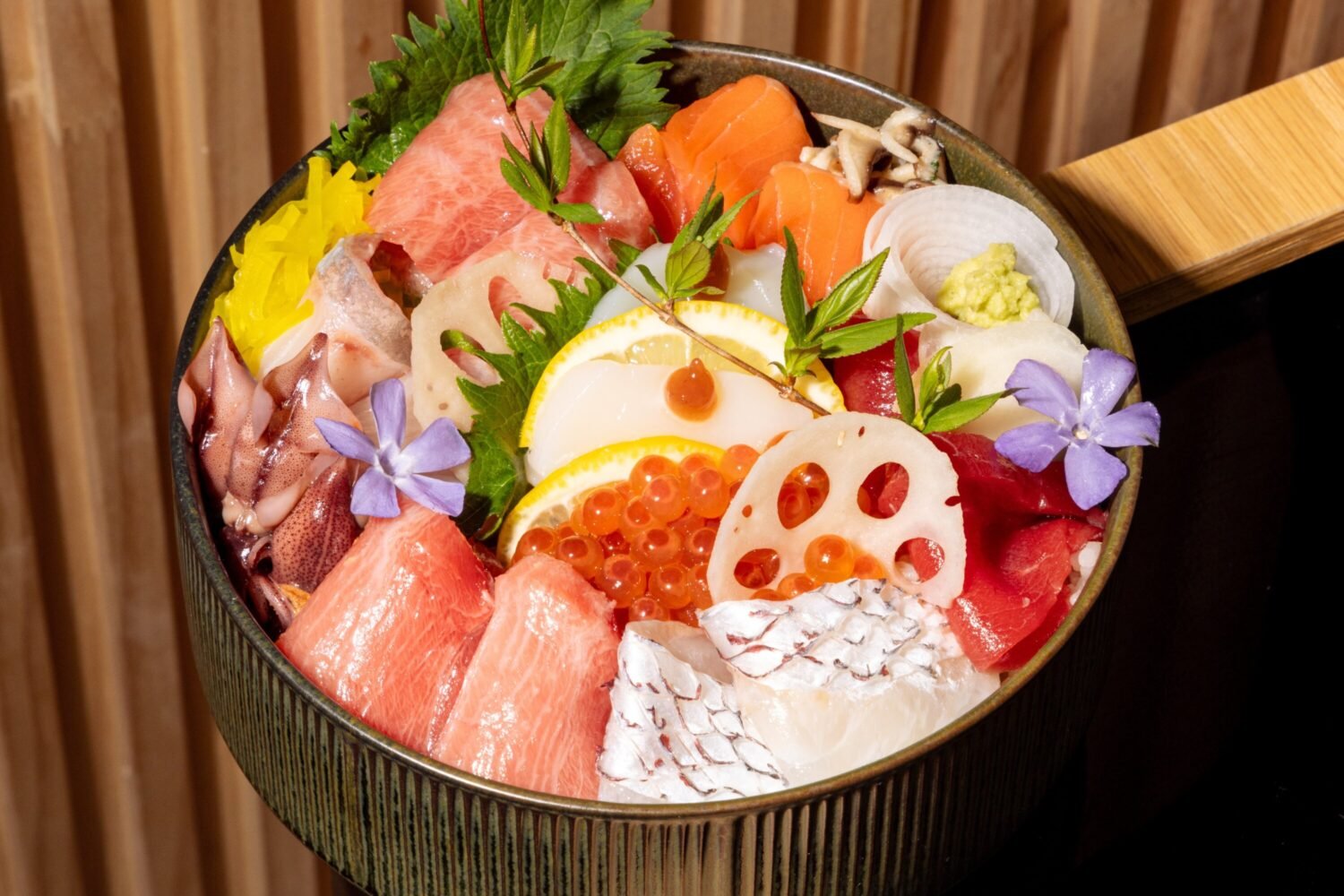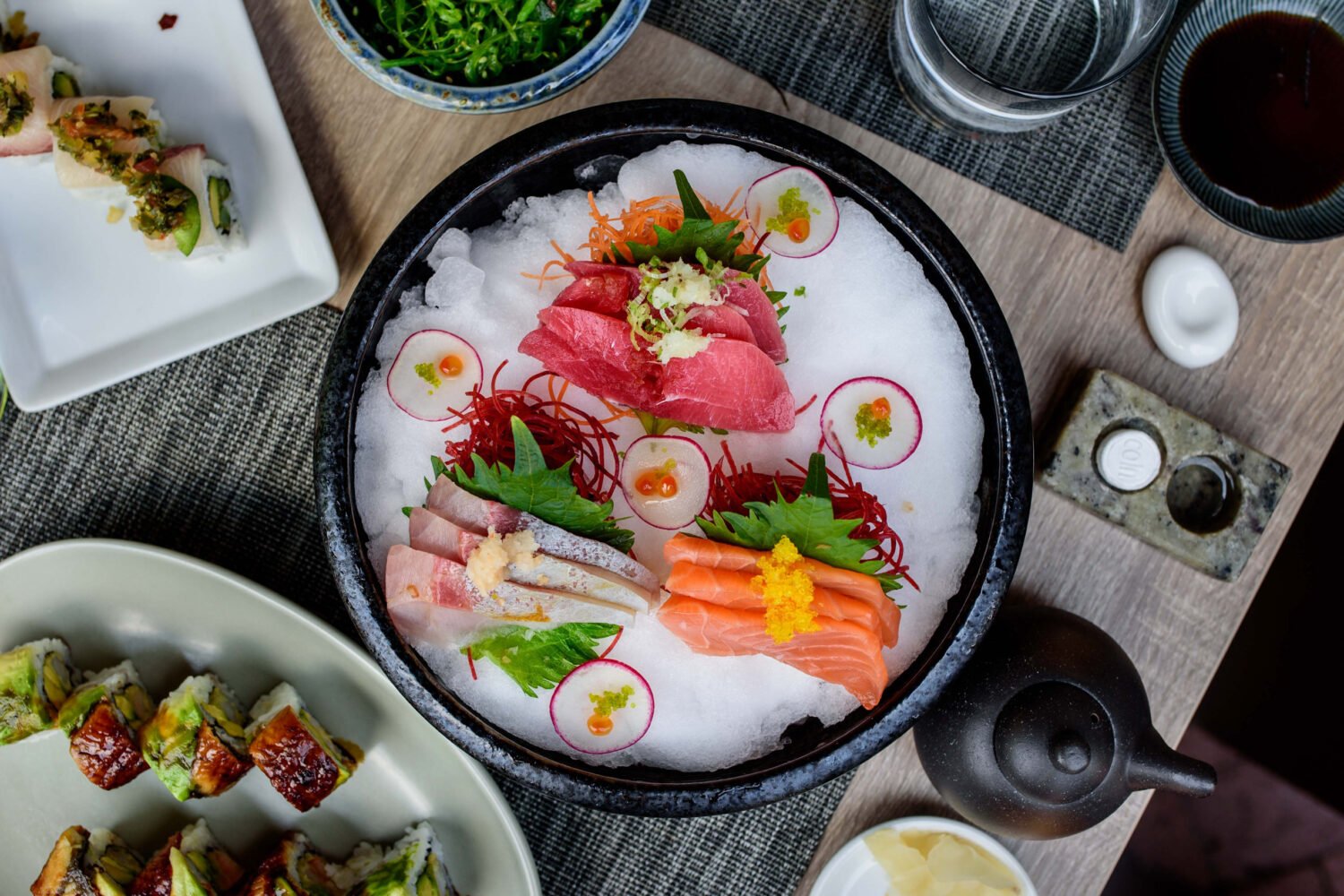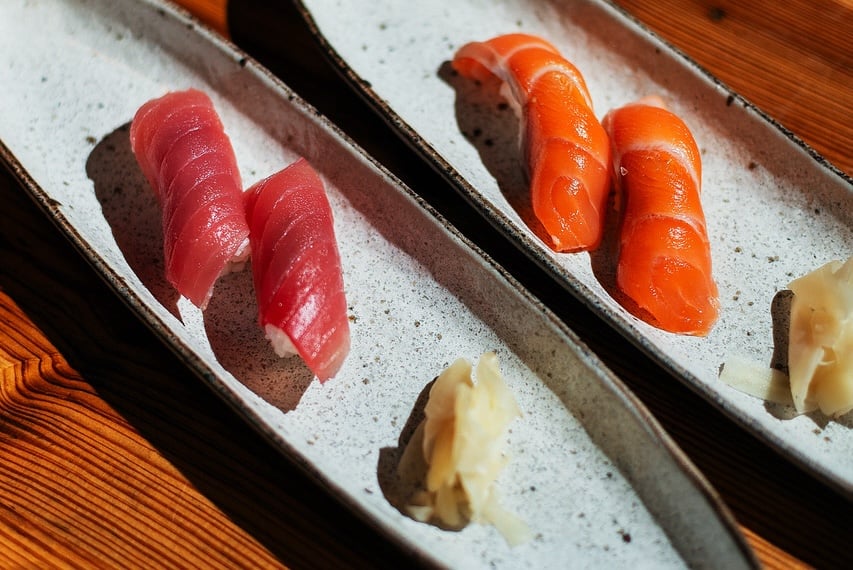The dish: tuna nigiri. The place: Sushi Ogawa. The reason: aged fatty tuna, perfect rice, house-made soy sauce.
Tuna shows up on every sushi menu in town, but as with steak, you can tell when the meat is being handled by a master. For a sampling of the city’s best, head to six-month-old Sushi Ogawa (2100 Connecticut Ave., NW; 202-813-9715), Minoru Ogawa’s more refined sibling to Sushi Capitol. These four pieces of nigiri are available both à la carte and as part of the $80 omakase lineup.
• It all starts with large portions of tuna—up to 300 pounds—often from Japan or Spain. They’re cut upon arrival and classified by varying degrees of fattiness.
• O-toro, the richest, fattiest meat near the belly, is dry-aged in a temperature-controlled “tuna fridge” for up to two weeks. As with beef, resting allows the fat to settle evenly and intensifies the flavor.
• Chu-toro, the medium-fatty cuts between the belly and the back, may also be dry-aged, depending on fat content. Quick swimmers have leaner meat that’s carved and served within a few days. The same goes for maguro, the trimmest portion on the fish, with a flavor that shines when freshest.
• Ogawa riffs on zuke, traditionally soy-marinated tuna, by dipping slices of maguro in boiling water immediately before serving, cooling them in a dashi bath, then sometimes flash-torching the pieces for smokiness.
• Rice and fish are treated with equal care. Premium California grains are rinsed, rid of impurities (such as odd-shaped pieces), cooked, and seasoned with Ogawa’s secret vinegar blend. The rice is then stored in wooden buckets—which keep the grains warm and moist—for service.
• Anyone can pack a dense ball of rice—Ogawa’s sushi chefs train for years to work plenty of air into the delicate grain beds, creating pillows, rather than dense pads, for the fish.
• Each of Ogawa’s senior sushi cooks creates his own recipe for soy sauce—typically a blend of soy, sake, mirin, and other ingredients. There’s no dipping—chefs use paintbrushes to sweep the delicate brew across the fish before serving.
This article appears in our August 2016 issue of Washingtonian.

